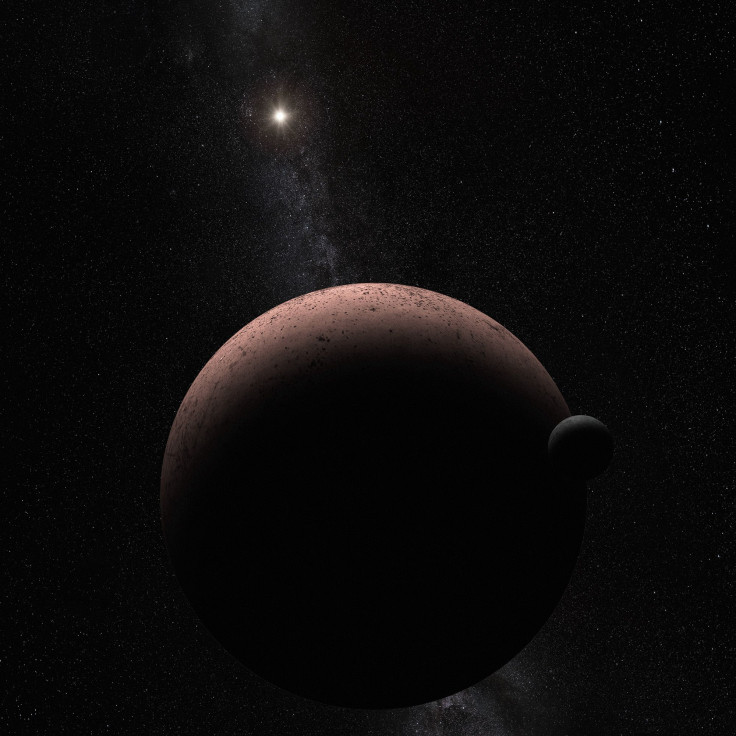Distant Icy Dwarf Planet Makemake Has A Dark Little Moon, Hubble Images Reveal

Makemake — the second-brightest and third-largest known object in the Kuiper Belt — has a moon. The dwarf planet, just 870 miles in diameter and discovered by the Hubble Space Telescope in 2005, is named after a creation deity of the Rapa Nui people of Easter Island.
The dwarf planet’s moon, provisionally named MK2, was discovered by scientists in April 2015, and the discovery was announced Tuesday. The satellite is only 100 miles in diameter and was spotted by Hubble’s Wide Field Camera 3 at a distance of 13,000 miles from Makemake.
“Makemake is in the class of rare Pluto-like objects, so finding a companion is important. The discovery of this moon has given us an opportunity to study Makemake in far greater detail than we ever would have been able to without the companion,” Alex Parker from the Southwest Research Institute in Boulder, Colorado, who led the image analysis for the observations, said in a statement. “Our preliminary estimates show that the moon’s orbit seems to be edge-on, and that means that often when you look at the system you are going to miss the moon because it gets lost in the bright glare of Makemake.”
Although further observations would be needed to accurately determine the moon’s orbit, preliminary estimates indicate that its orbit is circular and that the moon completes one revolution around Makemake every 12 days or longer.
Determining the moon’s orbit will help scientists pin down its origin. If it is in a tight circular orbit, MK2 was probably created during a collision between Makemake and another Kuiper Belt object. If, on the other hand, the moon is in a wide, elongated orbit, it is more likely a captured object from the Kuiper Belt.
The images captured by Hubble suggest that MK2 has a charcoal black surface, even though Makemake has a bright, icy surface. This, scientists believe, is probably because MK2 is too small, and its gravity too weak, to hold on to its reflective icy crust, which sublimates — changing from solid to gas — under sunlight.
“The discovery may have solved one mystery about Makemake. Previous infrared studies of the dwarf planet revealed that while Makemake’s surface is almost entirely bright and very cold, some areas appear warmer than other areas. Astronomers had suggested that this discrepancy may be due to the sun warming discrete dark patches on Makemake’s surface,” NASA said in the statement. “These previous infrared data did not have sufficient resolution to separate Makemake from MK2. The team’s reanalysis, based on the new Hubble observations, suggests that much of the warmer surface detected previously in infrared light may, in reality, simply have been the dark surface of the companion MK2.”
© Copyright IBTimes 2024. All rights reserved.






















